How to Fix "You don't have permission to access on this server" Error
Get Free Scanner and check your computer for errors
Fix It NowTo fix found issues, you have to purchase the full version of Combo Cleaner. Free trial available. Combo Cleaner is owned and operated by Rcs Lt, the parent company of PCRisk.com read more.
How to Fix “You don’t have permission to access on this server” Error
If you get a “You don’t have permission to access on this server” error message when accessing a website, it’s likely caused by your VPN or proxy server but can also be caused by browser and other network-related issues. This article will discuss this error in more depth and provide ways to fix it.
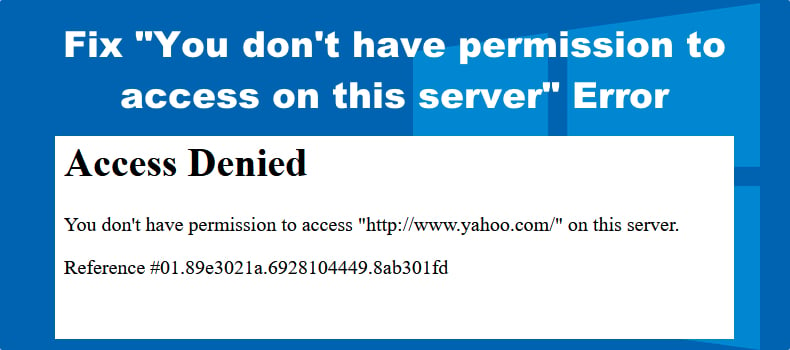
You may get one of two versions of this error that read as follows:
Access Denied
You don’t have permission to access on this server
Forbidden
You don’t have permission to access on this server
What Causes the “You don’t have permission to access on this server” Error?
- Your browser uses a different proxy. In most cases, this error occurs when your web browser uses different proxy settings than your computer, which may happen when you use a proxy or a VPN service.
- The website’s URL has changed. You may get this error if the website was cached on your browser but its address was changed. Clearing the cached data for the particular website or clearing your browser’s entire cache can fix the issue.
- The browser cache is corrupt. The cached website data on your browser may become corrupt and trigger the error. Clearing the browsing data will also fix the error.
- An issue with the server that hosts the website. The server that hosts the website might be down or is under maintenance.
- VPN use. If you use a VPN service, a website may block you from accessing it because it thinks there’s an issue with your proxy or browser cookies. However, in some cases, using a VPN may fix the error. So, if you already use a VPN - disable it. Otherwise, try getting a VPN extension or app and check if that fixes the issue.
Below are some troubleshooting methods to help you fix the “You don’t have permission to access on this server” error. Which method will work for you depends on what caused the error.
Video on How to Fix "You don't have permission to access on this server"
Table of Contents:
- Introduction
- Method 1. Clear Browser Cookies and Cache
- Clear Cookies and Cache in Google Chrome
- Clear Cookies and Cache in Mozilla Firefox
- Clear Cookies and Cache in Microsoft Edge
- Method 2. Install a VPN Browser Extension
- Install a VPN Extension on Google Chrome
- Install a VPN Extension on Mozilla Firefox
- Install a VPN Extension on Microsoft Edge
- Method 3. Reset Browser Settings to Default
- Reset Google Chrome to Default Settings
- Reset Mozilla Firefox to Default Settings
- Reset Microsoft Edge to Default Settings
- Method 4. Disable Your Proxy Server
- Video on How to Fix "You don't have permission to access on this server"
Download Computer Malware Repair Tool
It is recommended to run a free scan with Combo Cleaner - a tool to detect viruses and malware on your device. You will need to purchase the full version to remove infections. Free trial available. Combo Cleaner is owned and operated by Rcs Lt, the parent company of PCRisk.com read more.
If the website was cached on your browser, but its address was changed, you will get the “You don’t have permission to access on this server” error. Clearing your web browser’s browsing cache, cookies, and other browsing data will fix it.
Clearing your browsing data won’t affect the custom settings you’ve made to your browser.
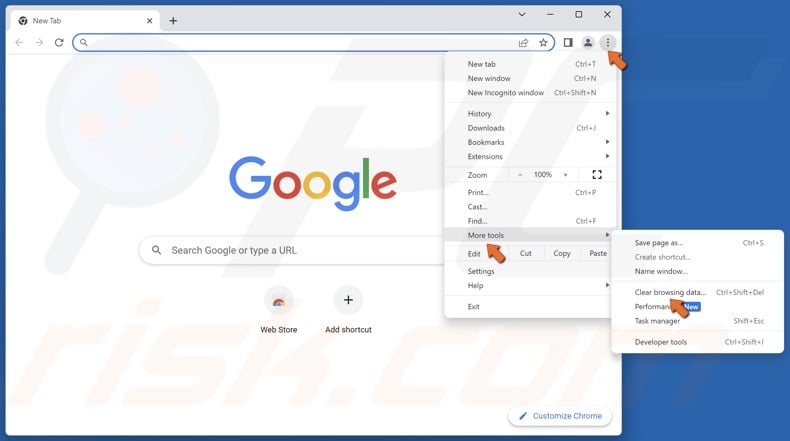
1. Open Chrome. Click the three-dot menu button at the top-right corner, select More tools, and click Clear browsing data.
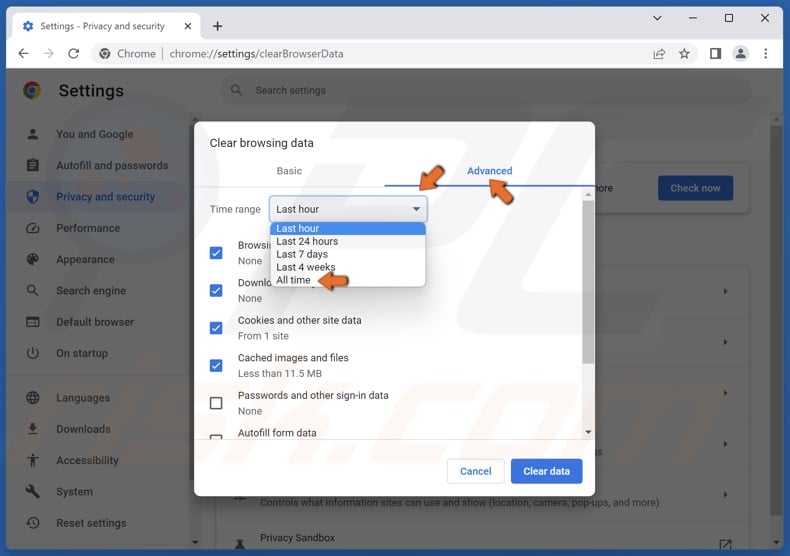
2. Select the Advanced tab.
3. Open the Time range drop-down menu and select All time.
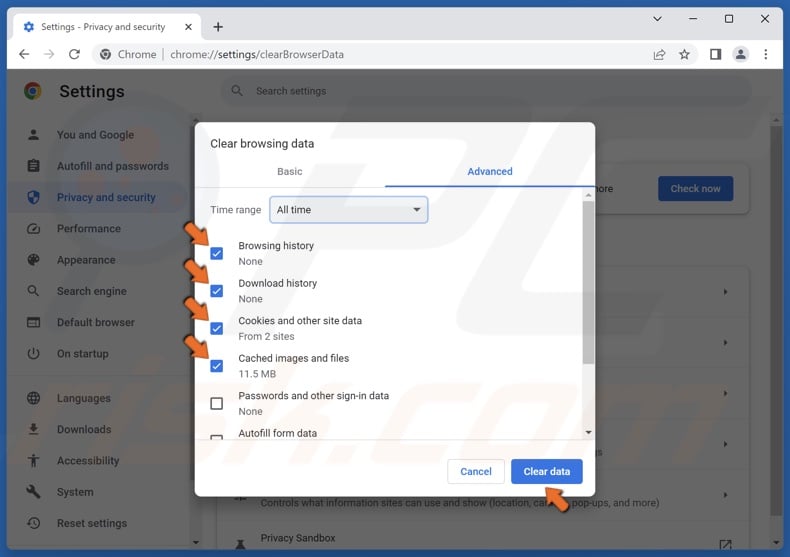
4. Mark the Browsing history, Download history, Cookies and other site data, and Cached images and files checkboxes.
5. Click Clear data.
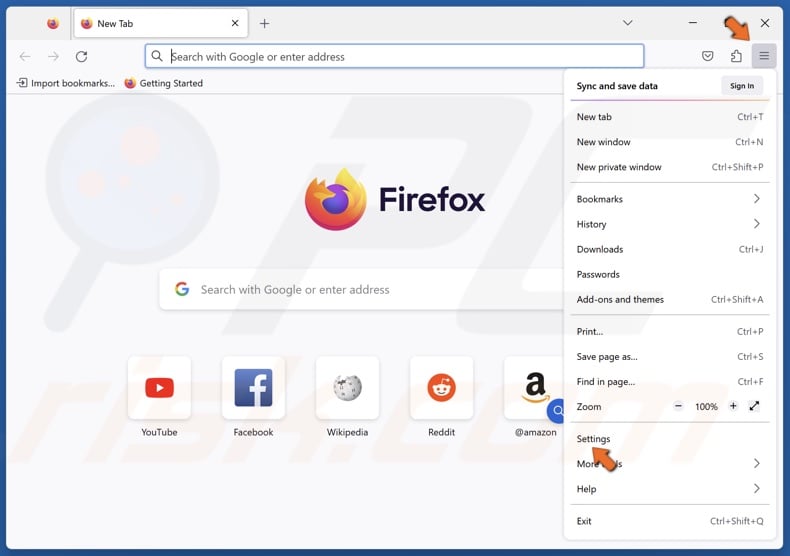
1. Open Firefox. Open the menu at the top-right corner and click Settings.
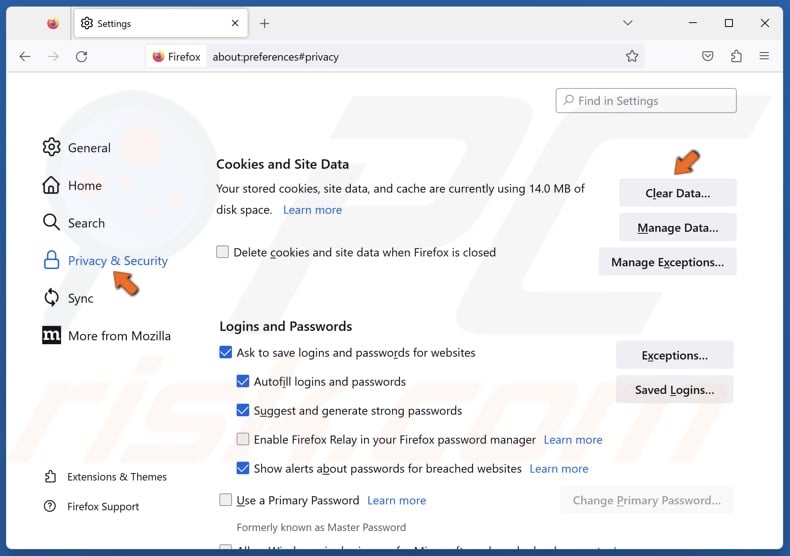
2. Select the Privacy & Security panel.
3. Scroll down and click Clear Data in the Cookies and Site Data section.
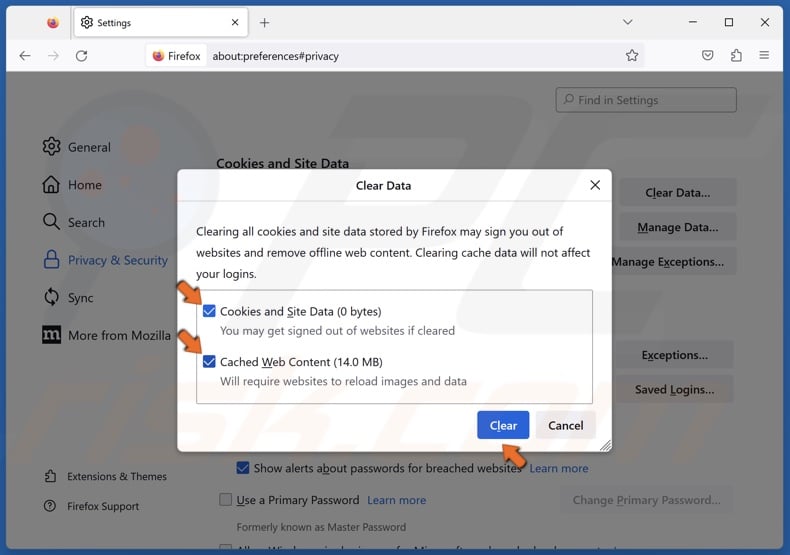
4. Mark the Cookies and Site Data and Cached Web Content checkboxes and click Clear.
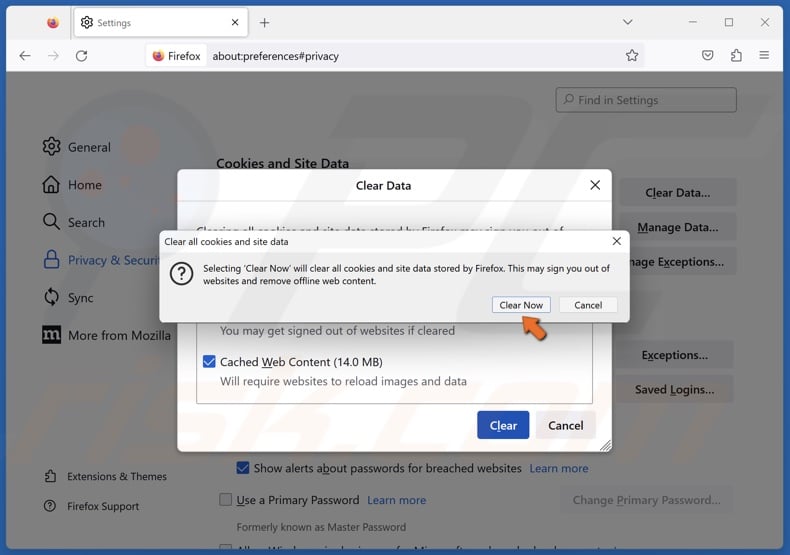
5. Click Clear Now.
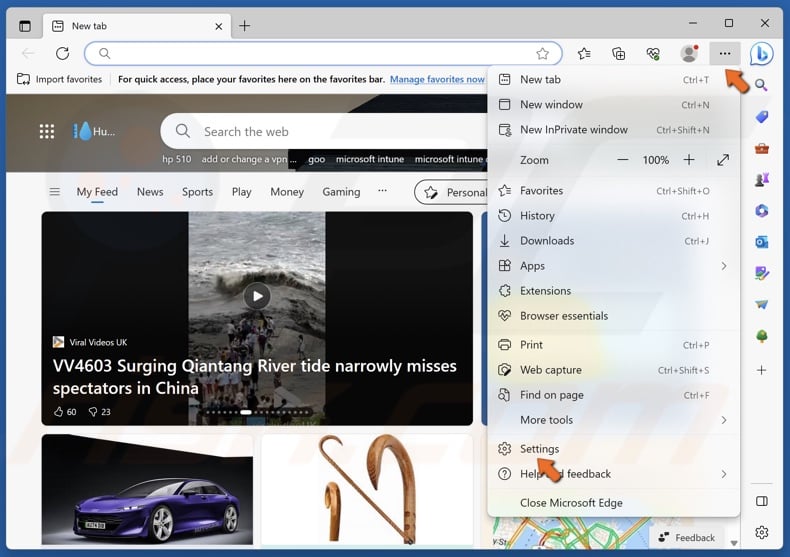
1. Open Edge. Click the three-dot menu button at the top-right corner and click Settings.
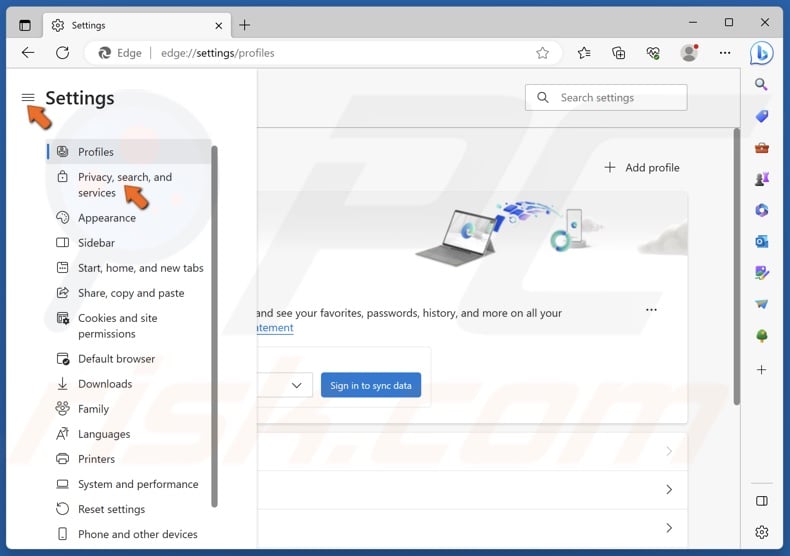
2. Click Privacy, search, and services in the right pane.

3. Scroll down and click the Choose what to clear.
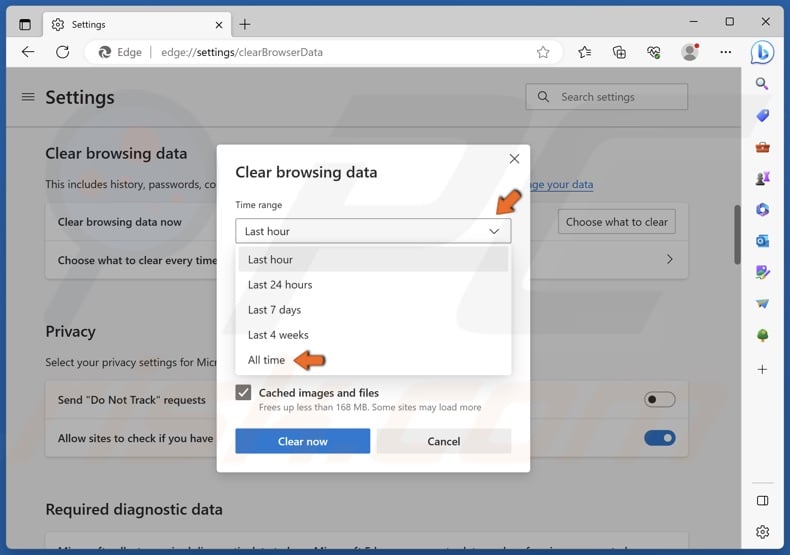
4. Open the Time range drop-down menu and select All time.
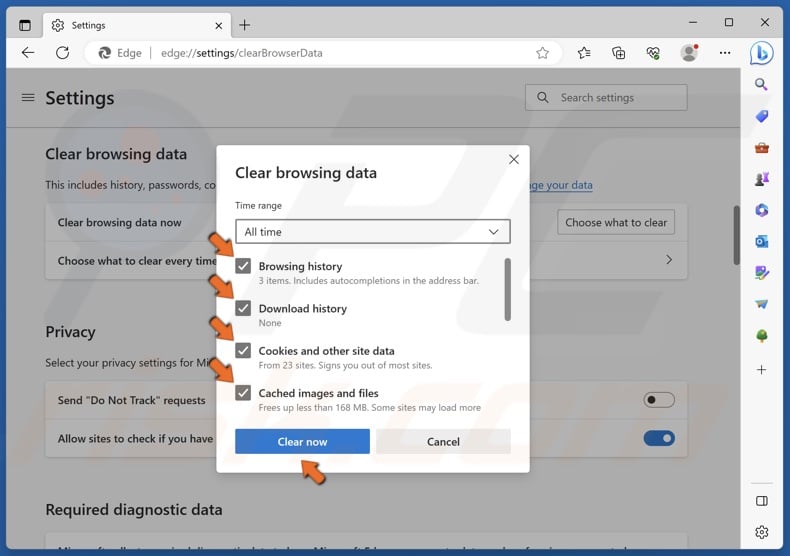
5. Mark the Browsing history, Download history, Cookies and other site data, and Cached images and files checkboxes.
6. Click Clear now.
Method 2. Install a VPN Browser Extension
VPNs hide your IP address by routing data through their servers. Many users have reported fixing the “You don’t have permission to access on this server” error by installing a VPN extension on their browser.
Nevertheless, your VPN browser extension can also trigger the error since some websites block the use of VPNs.
Therefore, if you don’t use a VPN service, try installing a VPN extension, but if you already use a VPN, try to disable it and check if that fixes the error.
Install a VPN Extension on Google Chrome
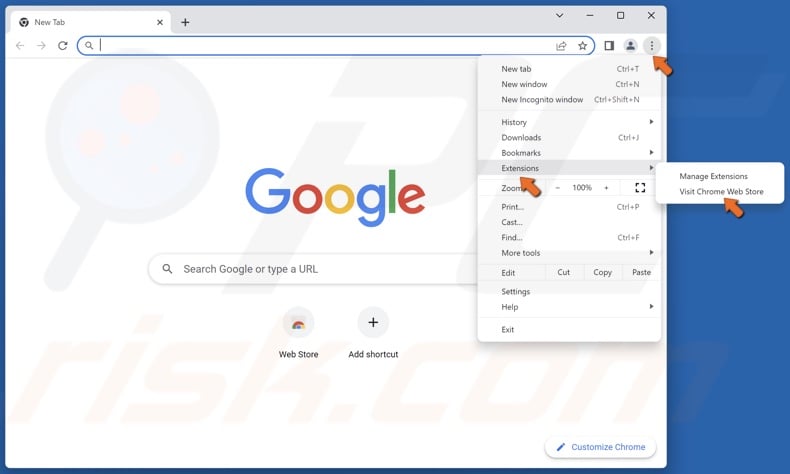
1. Open Chrome. Click the three-dot menu button at the top-right corner, select Extensions and click Visit Chrome Web Store.
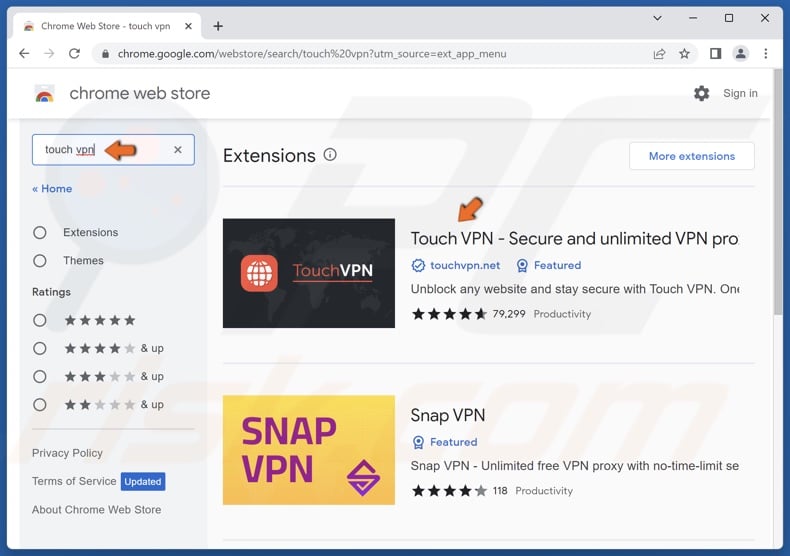
2. Type in Touch VPN in the search box and press Enter.
3. Select Touch VPN.
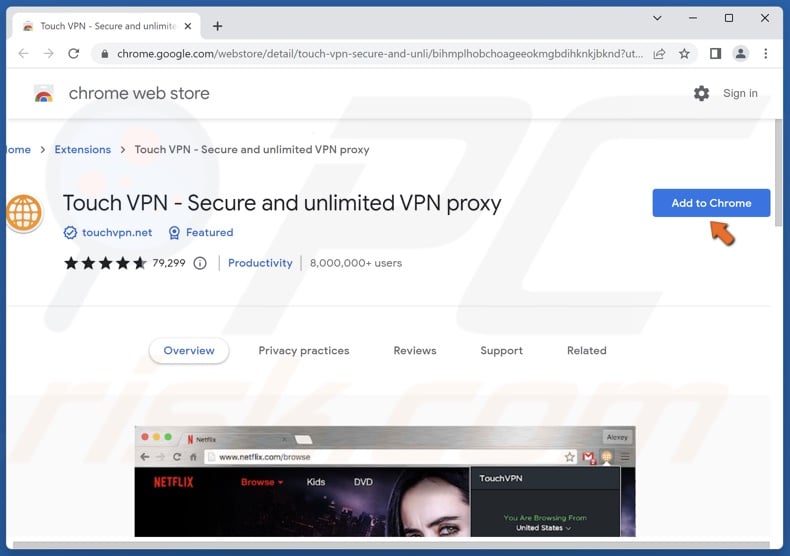
4. Then, click Add to Chrome.
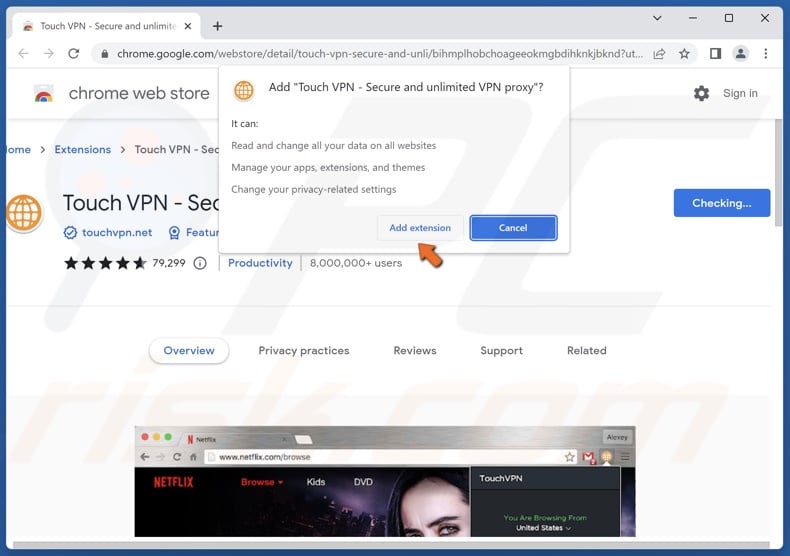
5. Click Add extension when prompted.
6. If you already had a VPN extension, and got the error, toggle the slider next to your VPN extension to disable it.
Install a VPN Extension on Mozilla Firefox

1. Open Firefox. Open the menu at the top-right corner and click Add-ons and themes.
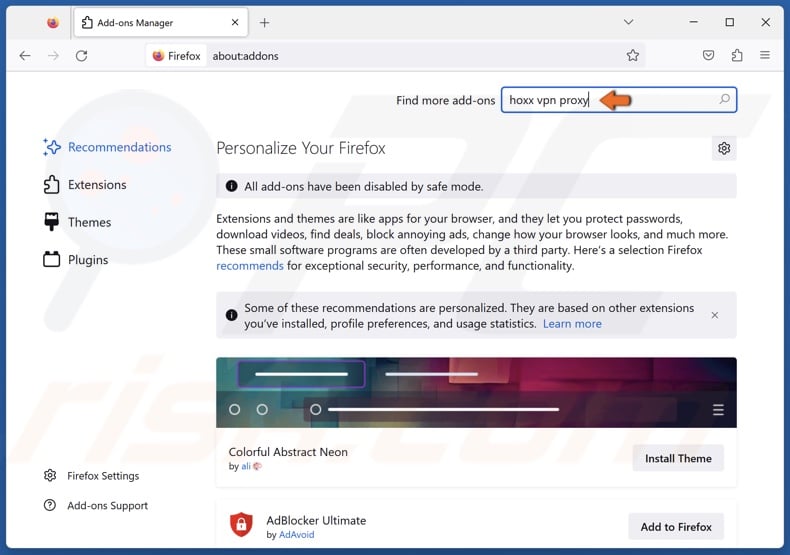
2. Type in Hoxx VPN Proxy in the search box and press Enter.
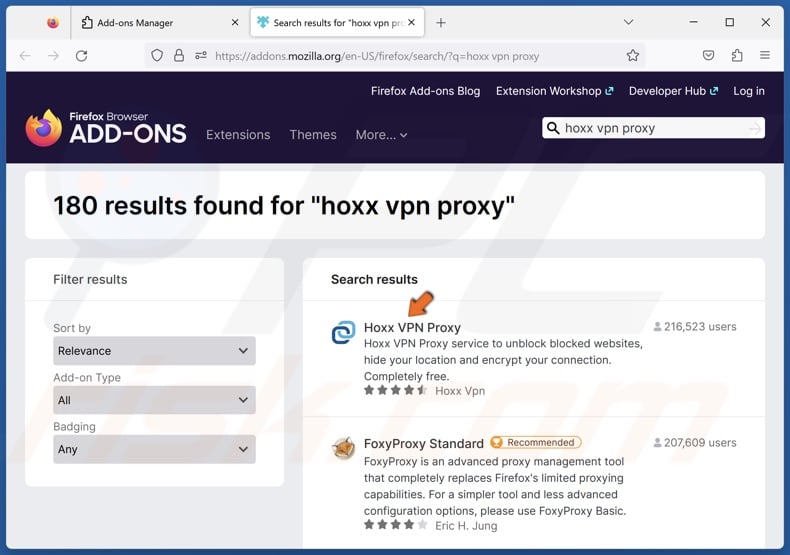
3. Click on Hoxx VPN Proxy in the search results.
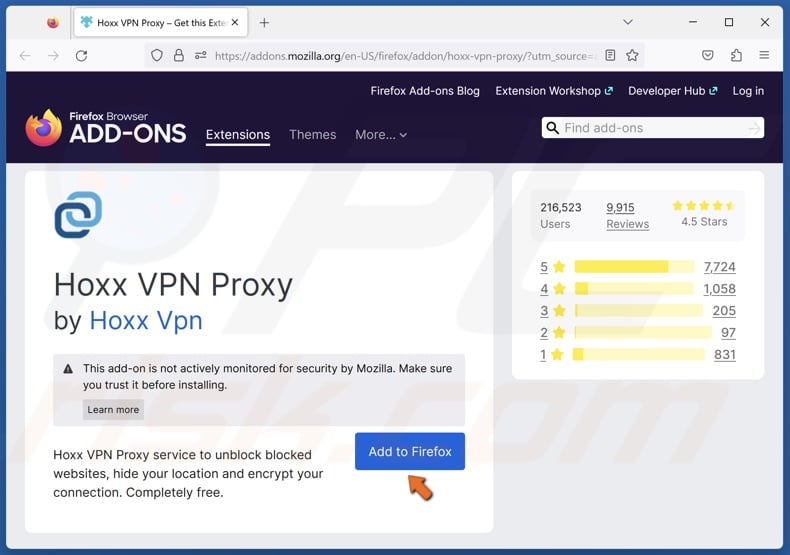
4. Click Add to Firefox.
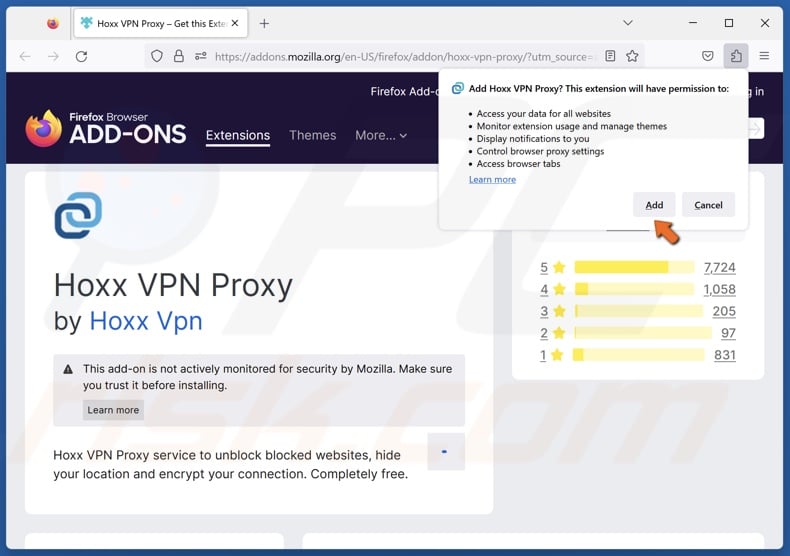
5. Click Add when prompted.
6. If you already had a VPN extension, and got the error, toggle the slider next to your VPN extension to disable it.
Install a VPN Extension on Microsoft Edge
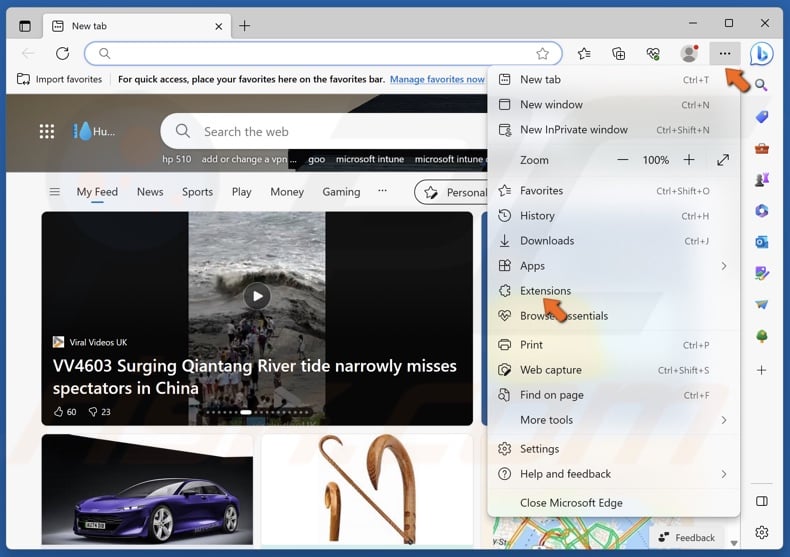
1. Open Edge. Click the three-dot menu button at the top-right corner and click Extensions.
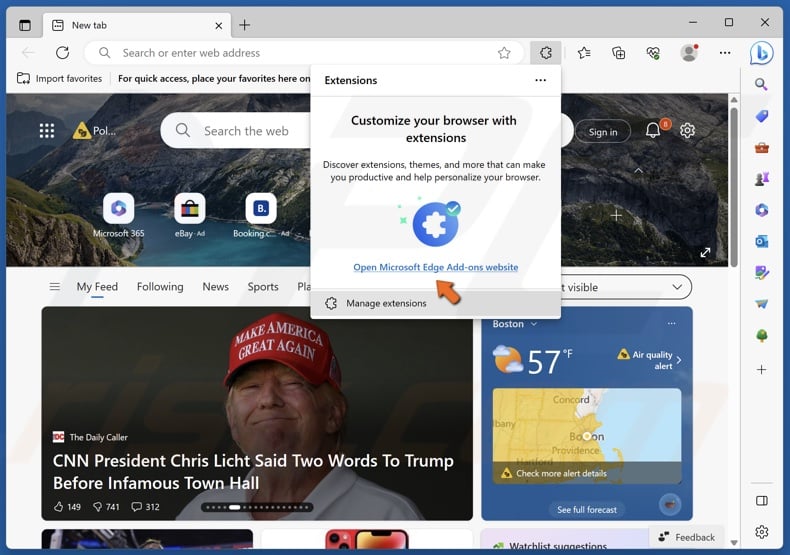
2. Click Open Microsoft Edge Add-ons website.
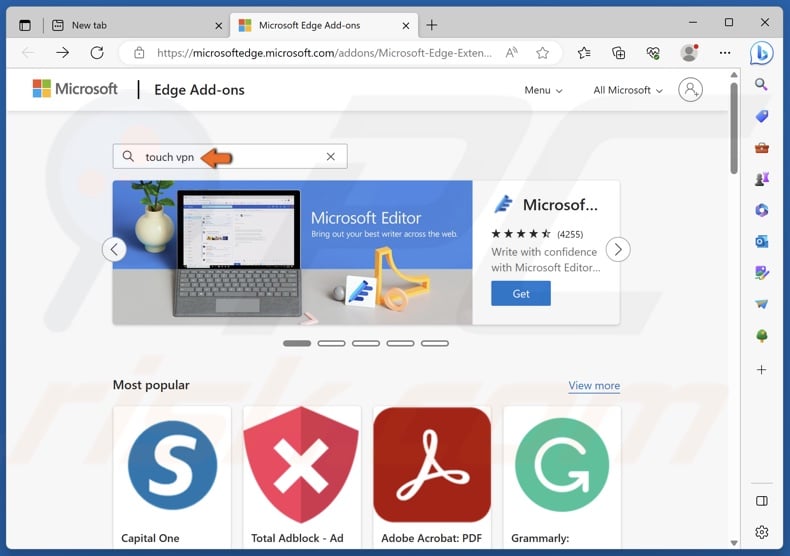
3. Type in Touch VPN in the search box and press Enter.
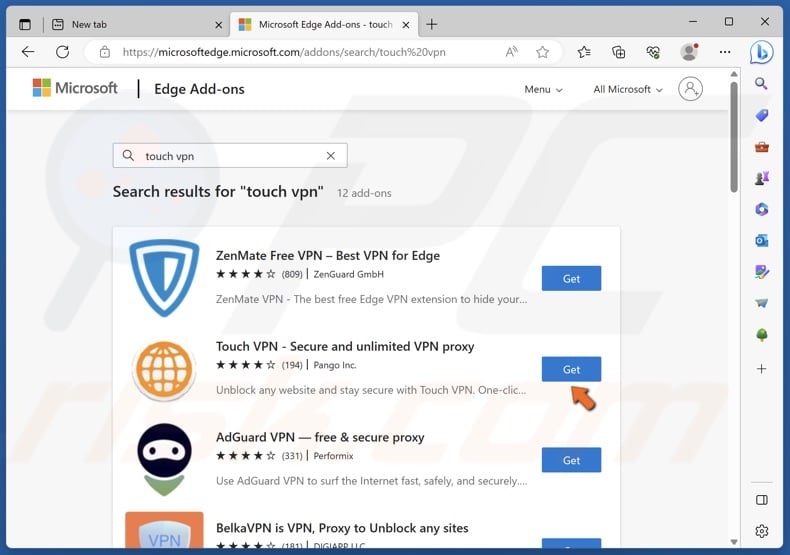
4. Click the Get button next to Touch VPN.
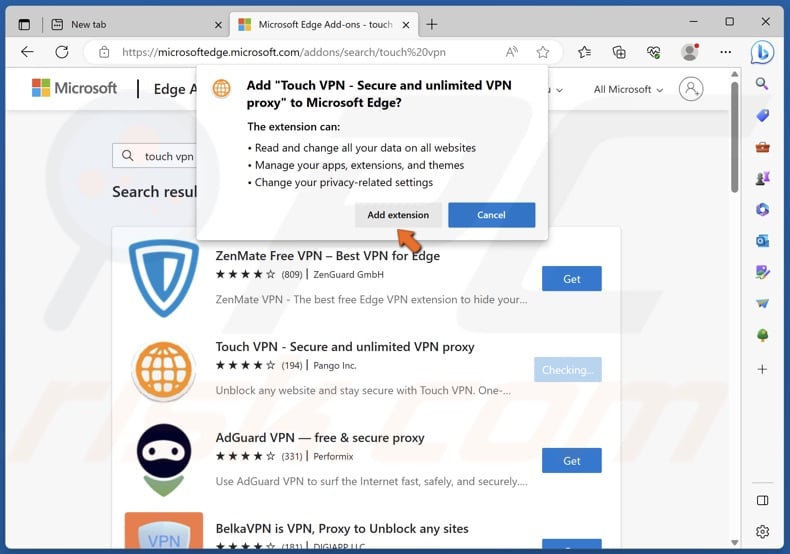
5. Click Add extension.
6. If you already had a VPN extension, and got the error, toggle the slider next to your VPN extension to disable it.
Method 3. Reset Browser Settings to Default
Resetting your web browser’s settings will revert all the changes you’ve made to your browser’s settings. Resetting your browser will also clear all browsing data and delete all extensions.
Reset Google Chrome to Default Settings
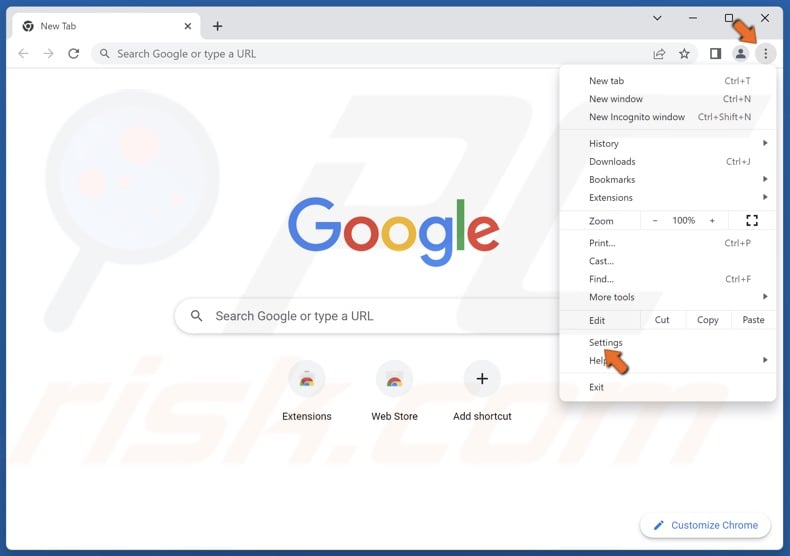
1. Open Google Chrome. Click the three-dot menu button at the top-right corner and click Settings.
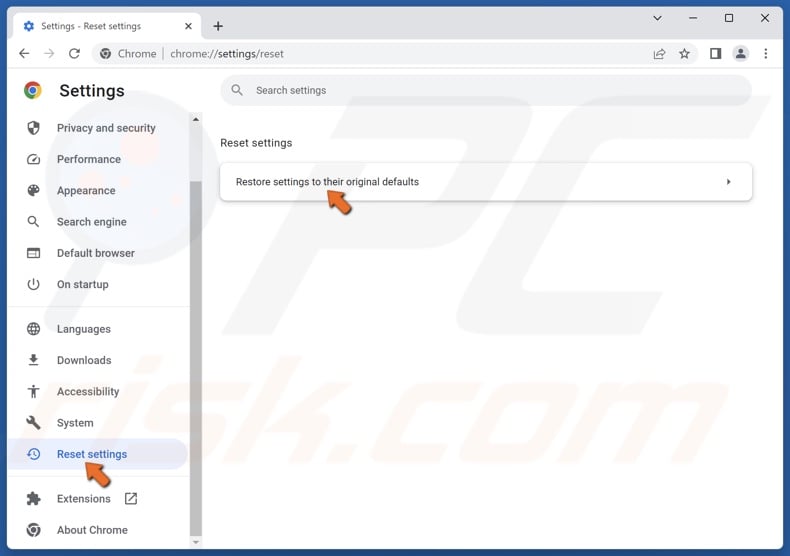
2. In the left pane, click Reset settings.
3. Click Restore settings to their original defaults.
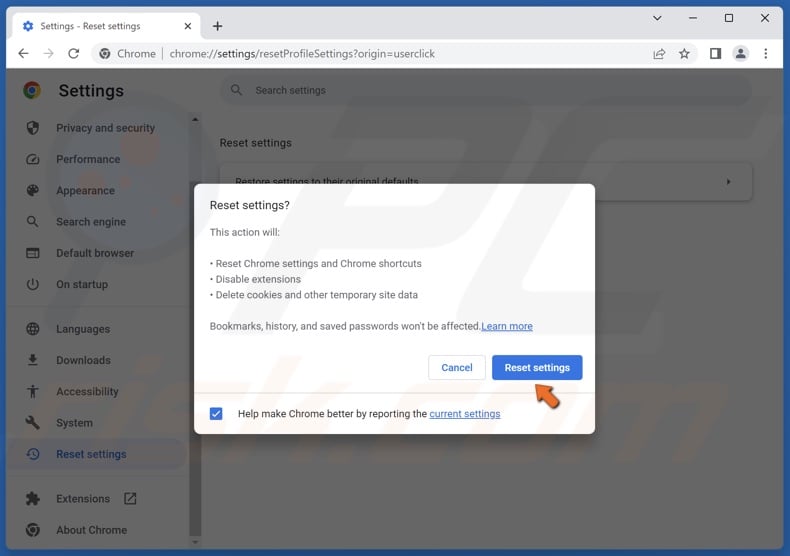
4. Click Reset settings.
Reset Mozilla Firefox to Default Settings
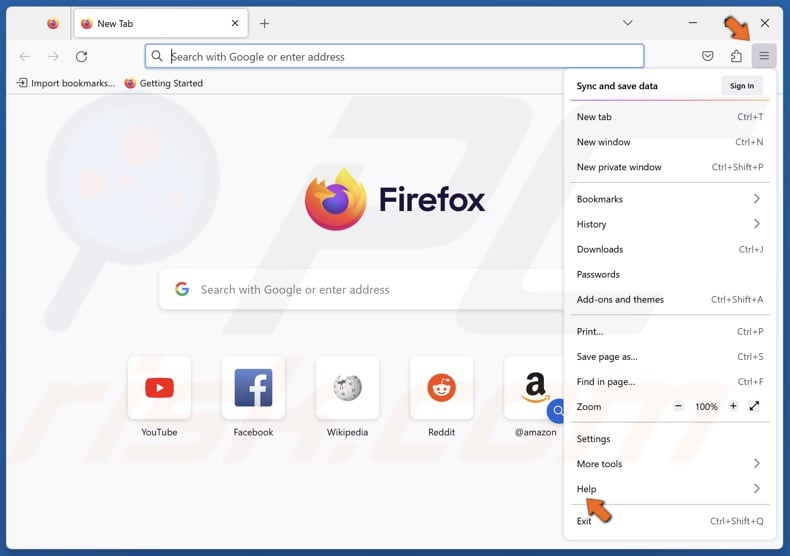
1. Open Mozilla Firefox. Open the menu at the top-right corner and click Help.
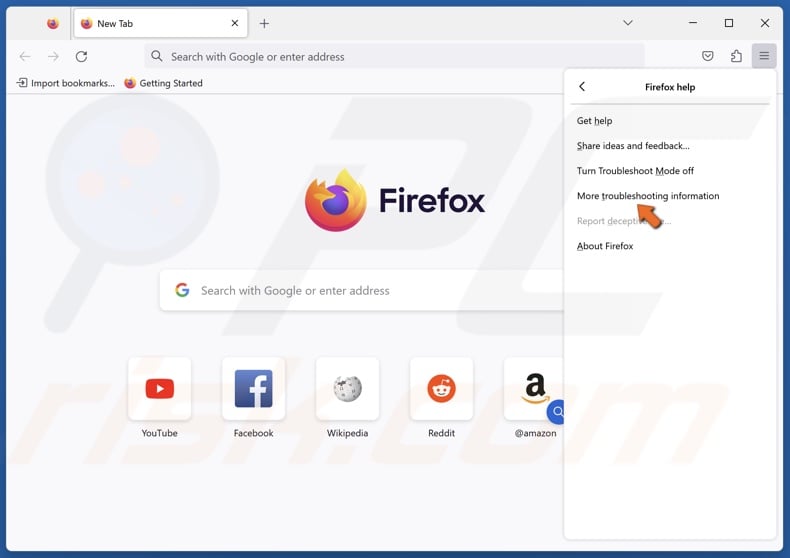
2. Click More troubleshooting information.
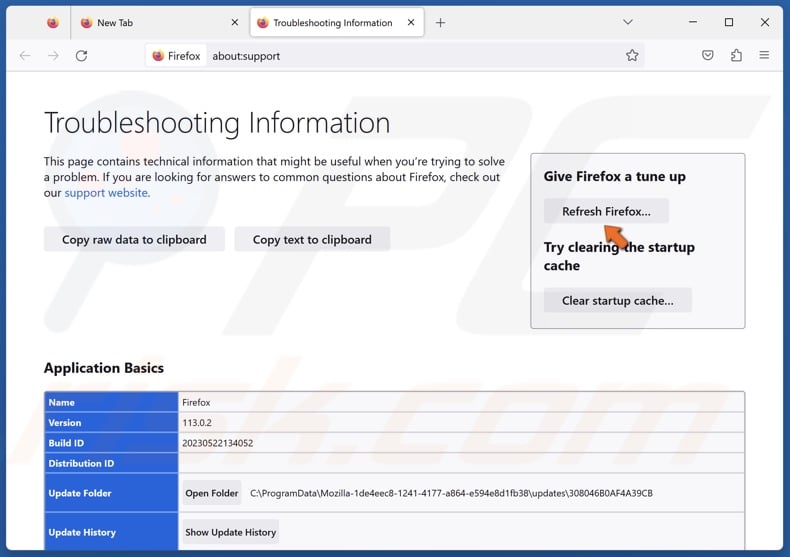
3. Click Refresh Firefox in the top-right of the window.
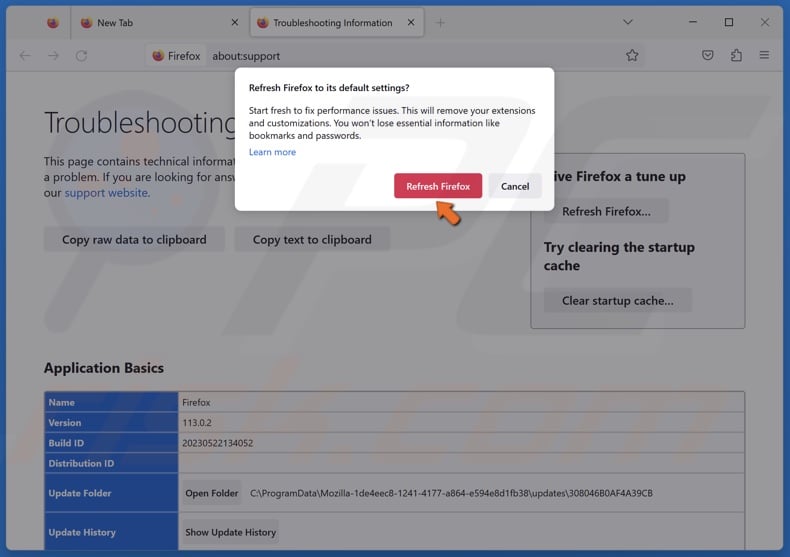
4. Click Refresh Firefox.
Reset Microsoft Edge to Default Settings

1. Open Edge. Click the three-dot menu button at the top-right corner and click Settings.
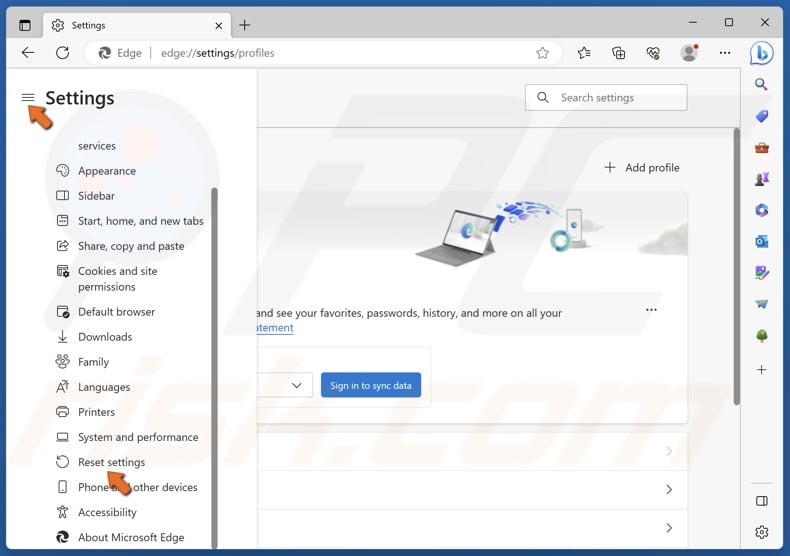
2. In the left pane, click Reset settings.
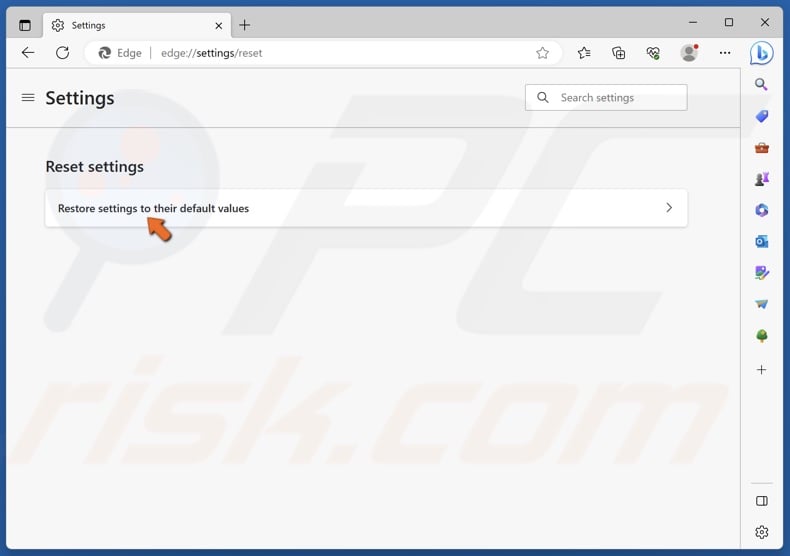
3. Click Restore settings to their default values.
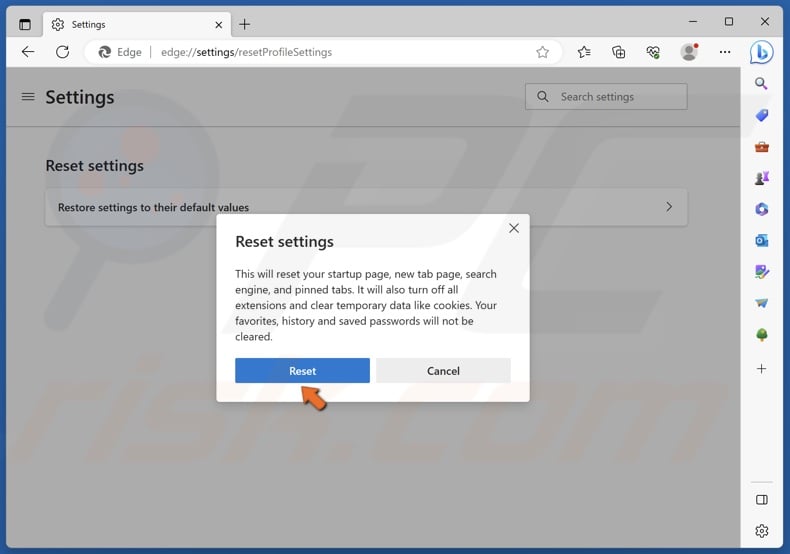
4. Click Reset.
Method 4. Disable Your Proxy Server
A proxy server can improve security and connection speeds, but using a proxy with misconfigured settings may trigger You don’t have permission to access on this server” error. Try disabling your proxy server and check if the error went away.
1. Hold down Windows+R keys to open Run.
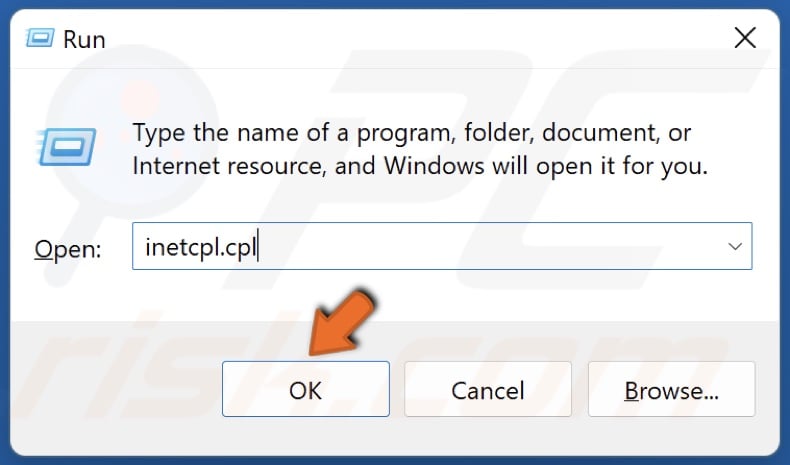
2. Type in inetcpl.cpl in the Run dialog and click OK.
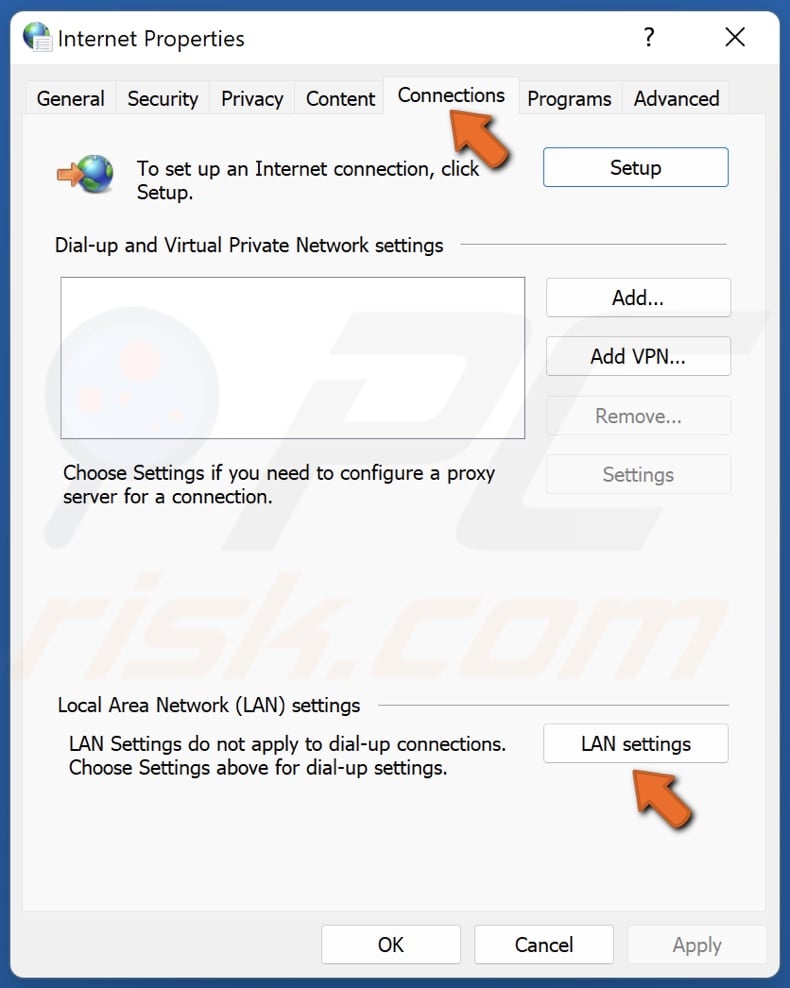
3. In the resulting Internet Properties window, select the Connections tab.
4. Click LAN settings.
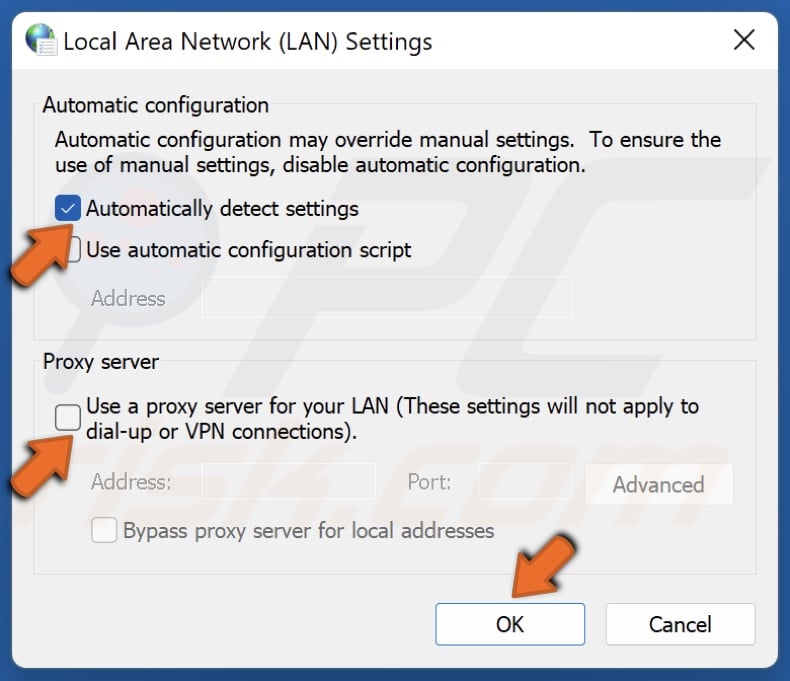
5. Unmark the Use a proxy server for your LAN checkbox.
6. Mark the Automatically detect settings checkbox.
7. Click OK.
Did this article help you fix the “You don’t have permission to access on this server” error? Leave a comment below to let us know.
Share:

Rimvydas Iliavicius
Researcher, author
Rimvydas is a researcher with over four years of experience in the cybersecurity industry. He attended Kaunas University of Technology and graduated with a Master's degree in Translation and Localization of Technical texts. His interests in computers and technology led him to become a versatile author in the IT industry. At PCrisk, he's responsible for writing in-depth how-to articles for Microsoft Windows.

▼ Show Discussion